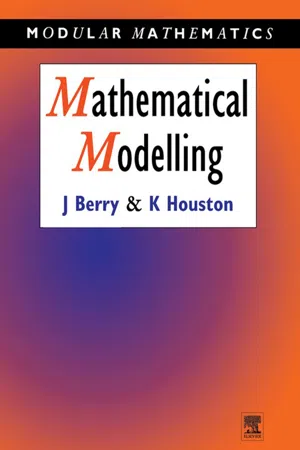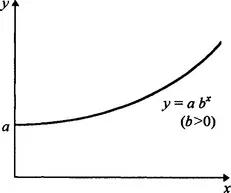
This is a test
- 160 pages
- English
- ePUB (mobile friendly)
- Available on iOS & Android
eBook - ePub
Mathematical Modelling
Book details
Book preview
Table of contents
Citations
About This Book
Mathematical modelling modules feature in most university undergraduate mathematics courses. As one of the fastest growing areas of the curriculum it represents the current trend in teaching the more complex areas of mathematics. This book introduces mathematical modelling to the new style of undergraduate - those with less prior knowledge, who require more emphasis on application of techniques in the following sections: What is mathematical modelling?; Seeing modelling at work through population growth; Seeing modelling at work through published papers; Modelling in mechanics.
Written in the lively interactive style of the Modular Mathematics Series, this text will encourage the reader to take part in the modelling process.
Frequently asked questions
At the moment all of our mobile-responsive ePub books are available to download via the app. Most of our PDFs are also available to download and we're working on making the final remaining ones downloadable now. Learn more here.
Both plans give you full access to the library and all of Perlego’s features. The only differences are the price and subscription period: With the annual plan you’ll save around 30% compared to 12 months on the monthly plan.
We are an online textbook subscription service, where you can get access to an entire online library for less than the price of a single book per month. With over 1 million books across 1000+ topics, we’ve got you covered! Learn more here.
Look out for the read-aloud symbol on your next book to see if you can listen to it. The read-aloud tool reads text aloud for you, highlighting the text as it is being read. You can pause it, speed it up and slow it down. Learn more here.
Yes, you can access Mathematical Modelling by John Berry,Ken Houston in PDF and/or ePUB format, as well as other popular books in Mathematics & Applied Mathematics. We have over one million books available in our catalogue for you to explore.
Information
1
What is Mathematical Modelling?
There are three natural questions to ask at the beginning of this book
• why study mathematical modelling?
• what is a mathematical model?
• how do we find mathematical models?
Broadly speaking
• mathematical modelling provides a method for solving problems mathematically
• a mathematical model is a mathematical representation of the relationship between two or more variables relevant to a given situation or problem
• finding mathematical models is a skill that we hope you will develop in this course.
In this first chapter we begin to explore these questions and illustrate the answers through simple problem situations.
1.1 Modelling with data
One of the simplest mathematical models is a linear one which represents the relation between two variables by a straight line graph. In some cases the variables given in the problem satisfy a linear relation, but in other situations we might have to transform the variables to obtain a straight line graph.
For example, a common method of transformation is the use of logarithms. If the variables x and y satisfy a power law relation, y = abx, then a graph of y against x will produce a curve as shown in Fig 1.1a. However, taking logarithms of each side gives

Fig 1.1a Graph of y against

and a graph of log y against x will give a straight line (as in Fig 1. lb). From the properties of the second graph we can estimate the values of a and b.

Fig 1.1b Graph of log y against x
In the following two examples we illustrate the graphical approach to problem solving.
Table of contents
- Cover image
- Title page
- Table of Contents
- Other titles in this series
- Copyright
- Series Preface
- Preface
- Chapter 1: What is Mathematical Modelling?
- Chapter 2: Modelling Population Growth
- Chapter 3: Mathematical Modelling in Action
- Chapter 4: Developing Modelling Skills
- Answers to Selected Problems
- Index of Modelling Problems
- Index
